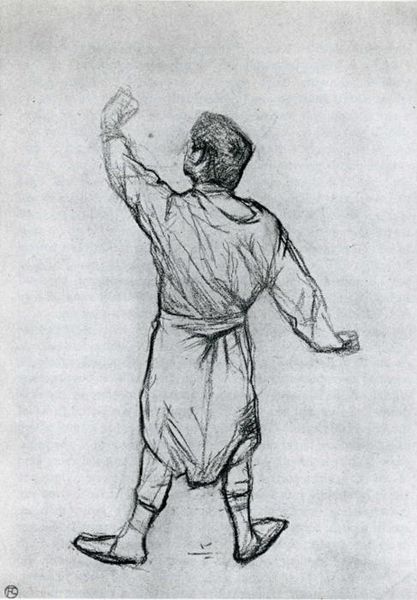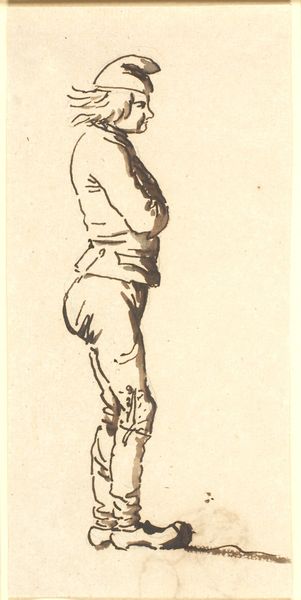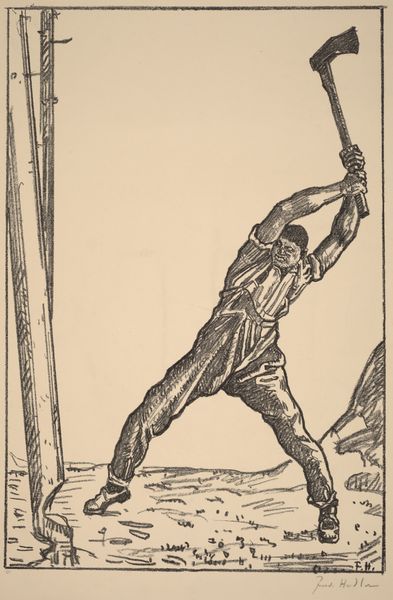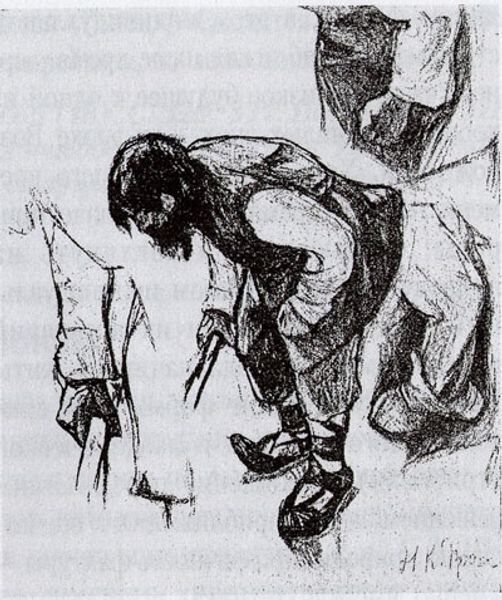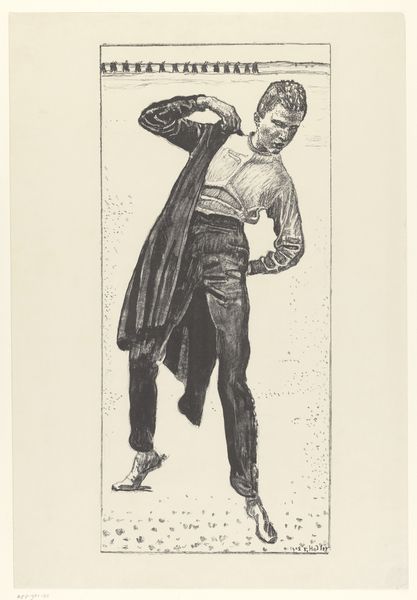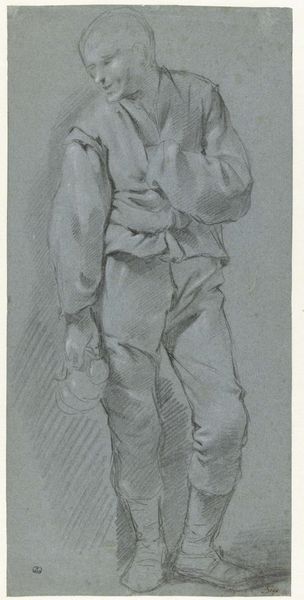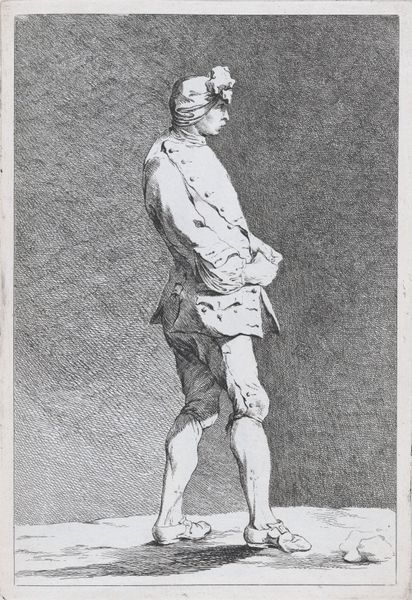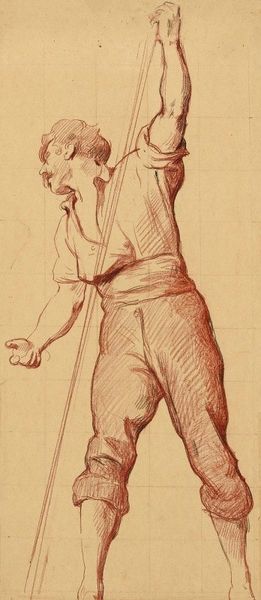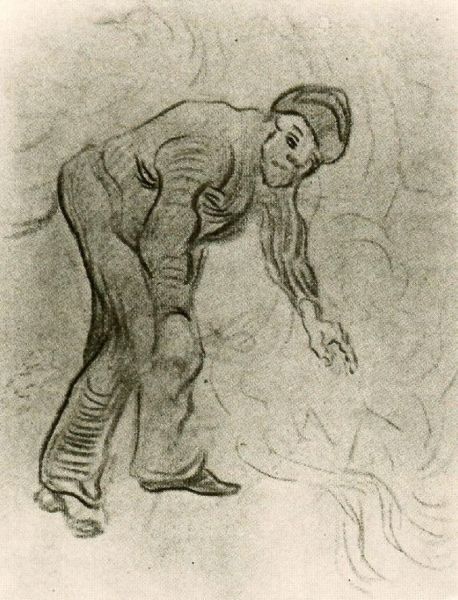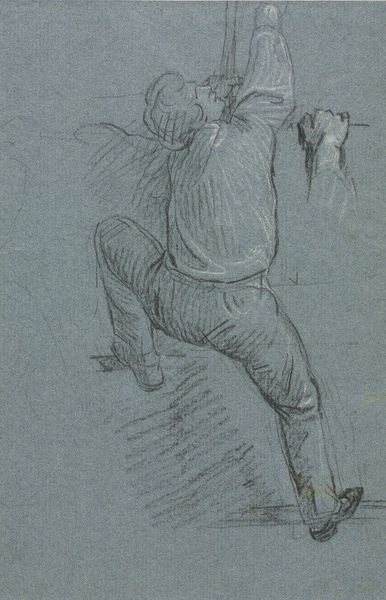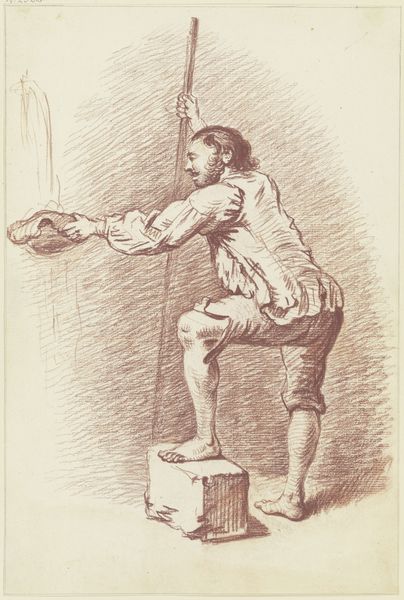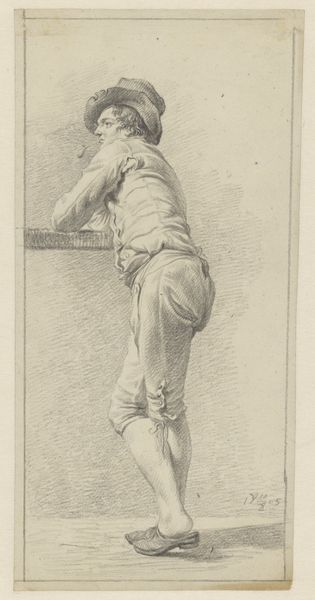
drawing, pencil
#
portrait
#
pencil drawn
#
drawing
#
figuration
#
pencil drawing
#
sketch
#
pencil
#
human
#
portrait drawing
#
post-impressionism
#
realism
Copyright: Public domain
Curator: What strikes me first is the intense, almost frenetic energy conveyed through what seems to be a simple pencil drawing. Editor: Indeed. Here we have Vincent van Gogh's "Standing Man Seen from the Back," dating from 1886. The piece is currently held at the Van Gogh Museum in Amsterdam. He uses only pencil on paper, but manages to capture so much…what’s the first thing you see? Curator: Definitely the textural richness of the shading. The artist is incredibly skilled in building tone with simple tools. And he pays meticulous attention to clothing. You notice the roughspun fabric, the way it hangs. Van Gogh clearly considered not just the figure, but how the means of labor impacted this person's posture, the slump of his shoulders, the tension in his neck. The worn soles of his shoes! You get such a powerful sense of manual labor represented here, the everyday worker, but immortalized in art. Editor: Absolutely. And considering this was drawn in 1886, we have to think about the political and social implications of such imagery. Van Gogh often focused on working-class figures, elevating them in a way that challenged the established norms of the art world, which typically celebrated aristocracy or religious iconography. These drawings allowed broader audiences, potentially including those same workers, to engage with art and see themselves represented within its visual language. What sort of cultural institutions gave his work that sort of influence? Curator: His commitment to representing the world around him through those he found important resonates so loudly! Van Gogh's early efforts at exhibiting his work, of course, are filled with rejection. It was the efforts of those involved with distributing cheap artworks, or using popular art journals that his themes caught on. He wasn't simply observing the working man; he was actively engaging with the idea of elevating manual labor in the public consciousness through the very art forms and mediums used to celebrate traditional, exclusionary definitions of 'art'. Editor: It's truly a work of quiet intensity, made potent through simple materiality. Curator: A demonstration of what Van Gogh found noble in ordinary human experience. Editor: And of what visual imagery reveals about social agency in representing dignity.
Comments
No comments
Be the first to comment and join the conversation on the ultimate creative platform.
